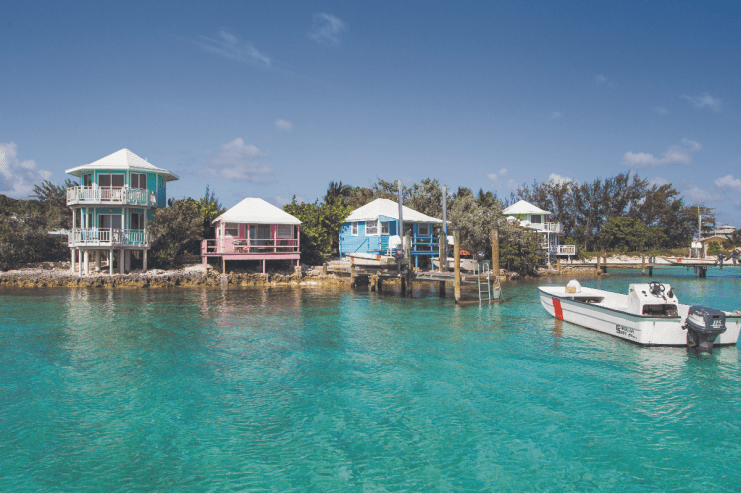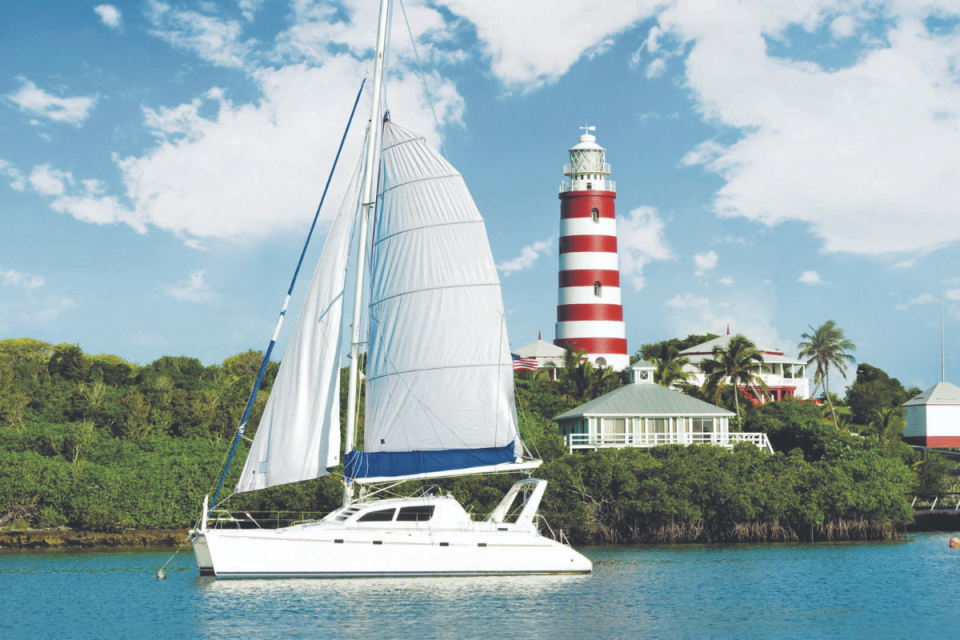The authentic part of the Bahamas, with secret beaches and amazing food

Arriving into a tiny airport after a twenty minute hop from Nassau International, we’re driving down the dusty palms highway to Freeport. The trees are ragged, stripped of their leaves and dead. Fields of new ones have been planted, but like anything beautiful in nature, patience is the virtue. It’s something the Grand Bahamians have had to harness since the Bahamas world was turned upside down with not just the destruction of the hurricane but the subsequent pandemic impact.
And so it’s a good thing that the attitude of the average Bahamian is to take it on the chin and move forward. There’s a sense of rebuilding and rethinking community that’s rooted in the history of these beautiful islands. Almost every Freeporter, I’ll come to find, has a story of loss or impacted business. But by heaping effort into fortifying their community spirit – whether that’s through sustaining marine health, spending time at a cosmic labrinth, or simply enjoying a good Wednesday night fish fry together – they’re coming through it.
Read more: Swim with the pigs in the Bahamas: How domestic swine became big business for the paradise islands
I was fortunate enough to dive head first and belly deep into all pursuits. On Grand Bahama, the lesser-visited sister island of New Providence and one of many paradisiacal isles away from the tourist masses, you can lean into adventure as much as kick back the tropical way. The city of Freeport is free of the Vegas-like industry and colonial architecture of more popular Nassau.
It’s perfect for a three day haunt, with natural cenotes, quad biking, world class sushi and shark watching. But mostly, go to feel closer to real Bahamian people and their excellent seafood. Who lives here, what do they do, and why is Freeport so much cooler? Let’s start with what they drink.
Drink the Bahamas way: Gullywashers
After a sweaty, adrenalin-laced day of quadbiking along dusty tracks off road to secret beaches and exploring national parks, I’m finally ready, I think. It’s Wednesday night in Freeport and that means one thing only. It’s fish fry.

Everyone congregates down at the harbour where numerous outdoor kitchens serve up grouper, lobster, conch salad, beans, and a solid slice of sweet mac’n’cheese. The sun is setting and the goombay and dancehall is pulsing over the crowd at benches and queuing round the corner for their fish, catching up with friends and family. It’s a no frills affair.
Off paper plates and washed down by the only drink it’s polite to order. Gullywash. If you order anything else on Grand Bahama, you’ll likely get stared down until you correct your language. It’s the famed gin and milk cocktail no Bahamian goes a fish fry without.
It tastes like a creamier pina colada and is strangely complimentary to the barbecued fish fry dishes, macaroni cheese and slaw, but it’s got its own tendencies from island to island. There’s also beer for the unconvinced – Sands is brewed on the island and its brewery-taphouse can be visited.
A place for reflection for many is Garden of the Groves, a botanical space with indigenous wildlife and migratory birds whose hidden centre point is an epic limestone labyrinth where you can stand and set intentions
FIGHTING BACK TO LIFE There is perhaps no better metaphor for acceptance and reassembling hope than casting an eye to the most fragile yet powerful character in Bahamian storm history: the sea. At Coral Vita, marine specialists tend to the coral reefs that line Grand Bahama, restoring what is almost irrevocably damaged from climate change and human pollution. The lab is open plan and open-walled, with a view of the water and sailboats. A dog plods around giving smiles and hugs as the team works.
Considering a quarter of all marine life depends on the presence of healthy, live coral, it’s easy to see why its survival is key. Following the 2019 hurricane’s damage – no doubt symptomatic of climate change – extreme loss of coral life meant the ocean lovers here had their work cut out. As homes and lives were lost to Dorian, the devastation was massive.
Comprised of marine biologists, oceanographers, deep sea divers and more, Coral Vita is a commercial for-profit entity, their coral farming techniques geared towards large scale restoration to be used globally, and in such speed up coral growth 50 times faster than nature would alone. See the resuscitation efforts at an above-water farm in Freeport.
Read more: Flee the UK and buy one of these gorgeous Caribbean properties
“Land- based farms can use breakthrough techniques that allow for faster growth of a more diverse array of corals,” say Coral Vita in their manifesto, with biomedical scientist and restoration specialist Alannah Vellacott adding in person: “Coral is impressive. They hold a secret algae powerhouse inside themselves that forms a mutual symbiosis.”
It’s clear from a morning at the lab that we have a duty to foster something similar with the oceans we are damaging at such a fast rate. The fact that they can reproduce naturally in so many ways, as Vellacott teaches me, is fascinating and helpful to the farmed process. “When conditions are aligned – the sea is warm, the stars are out, it’s really sweet: some coral types are hermaphroditic, some break up and repartner, and also there’s refragmentation.”
Who knew coral was so modern? And for anyone concerned about any GMO aspects to the farm, rest assured. Vellacott adds: “We’re only recreating genetics that already exist, the thermotolerant ones.”
Later, after a lunch of alfresco sushi at Pier One where I can actually watch wild nurse sharks basking below me, I drop in at a national park on my drive to the hotel, where hidden amongst acres of tall bush and reeds there are hidden cenotes where you can dive.
The palm fields lining the roads from both the airport and to the hotel are haggard and destroyed from 2019. See how far the hurricane seas ripped through the land – many houses reduced to nothing, some still standing vacant and roofless.
A place for reflection for many is Garden of the Groves, a botanical space with indigenous wildlife and migratory birds whose hidden centre point is an epic limestone labyrinth where you can stand and set intentions. There’s also a tiny wedding chapel atop a hill surrounded by lush trees and waterfalls.
At Lighthouse Pointe Grand Lucayan, where I’m staying, it’s not peak season but there’s still a healthy stream of guests. By night, dinner at the in-house restaurant is healthful and beautifully done – all steamed sea bream and vegetables and mashed potatoes – and a trail of jubilant karaoke trickling in from the bar.
Spirits are high at Lighthouse Pointe as the sun sets on its pristine beach and everyone gets up to have a belt. It was an entirely fresh perspective on the Bahamas